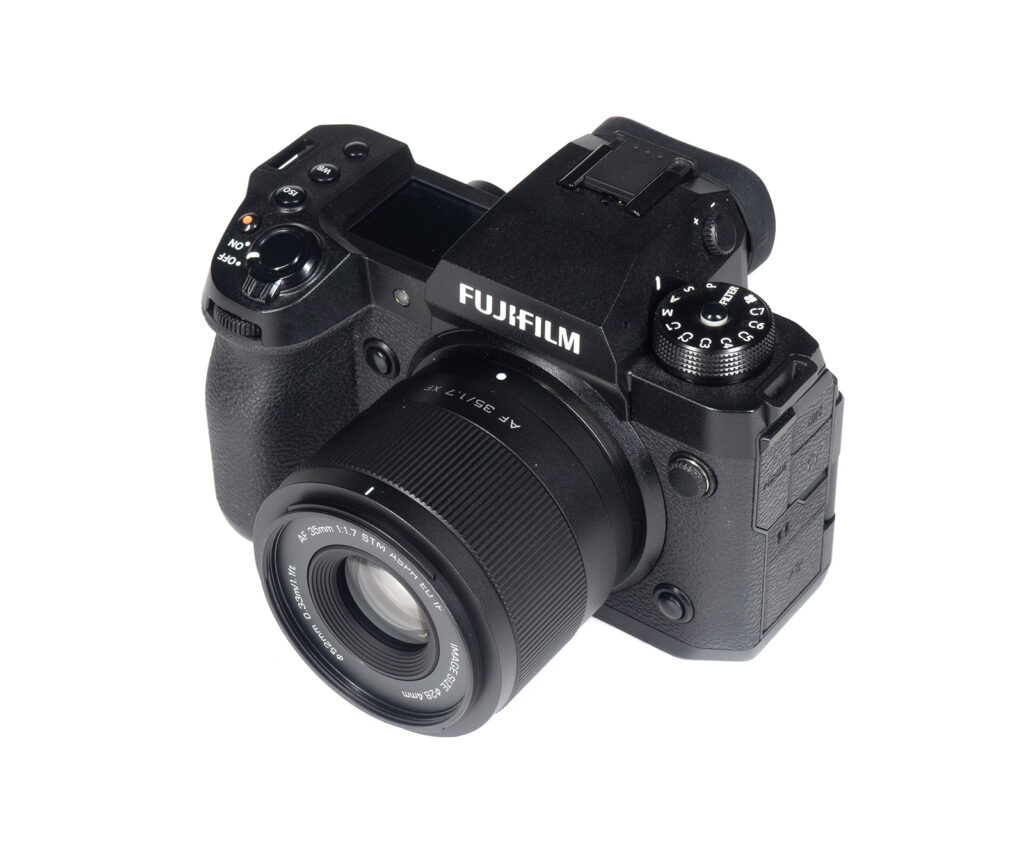Viltrox is currently busy expanding the “Air” lineup of lenses. As the name suggests, these lenses focus on a compact and lightweight design. We have already reviewed a couple of them, such as the AF 20mm f/2.8 E, AF 40mm f/2.5 E and the AF 56mm f/1.7 XF. The latter is an APS-C format lens – as is the new AF 35mm f/1.7 XF that we are discussing here now. In the APS-C scope, 35mm is equivalent to a 50mm “standard” lens on full-format cameras. The max aperture of f/1.7 is not terribly fast, but neither is Fujifilm’s own XF/XC 35mm f/2 – its main competitor. Priced at just $180 USD, it costs just a fraction of the Fujifilm XF lens ($400 USD).
The build quality of the AF 35mm f/1.7 X is in line with the other “Air” lenses. Meaning that Viltrox used quality engineered plastics based on a metal mount. The broad plastic focus ring is free of any wobbling and turns smoothly. A petal-shaped lens hood is part of the package. Other than that, there isn’t really much to report about the construction. There are no switches or a dedicated aperture ring. Weather selling is not supported but internal focusing should provide some protection at least.

The AF relies on a stepping motor. It’s a bit of an older tech (also still used by Fujifilm), but it does a nice job. The speed is perfectly fine and it operates without relevant noise. Manual focusing works “by-wire”, but that’s not news anymore in the mirrorless world. Firmware updates are possible via a USB-C port on the mount.
| Specifications | |
|---|---|
| Optical construction | 11 elements in 9 groups (1x ED, 2x HR, 1x aspherical) |
| Number of aperture blades | 9 |
| min. focus distance | 0.33m (max magnification 1:7.7) |
| Dimensions | φ64×54.7mm |
| Weight | 170g |
| Filter size | φ52mm |
| Hood | petal-shaped (bayonet mount, supplied) |
| Other features | USB-C port for firmware updates |
Distortions
The Viltrox AF 35 f/1.7 XF doesn’t feature distortion auto-correction. However, with a native pincushion distortion of 0.6%, it’s not a showstopper, really.
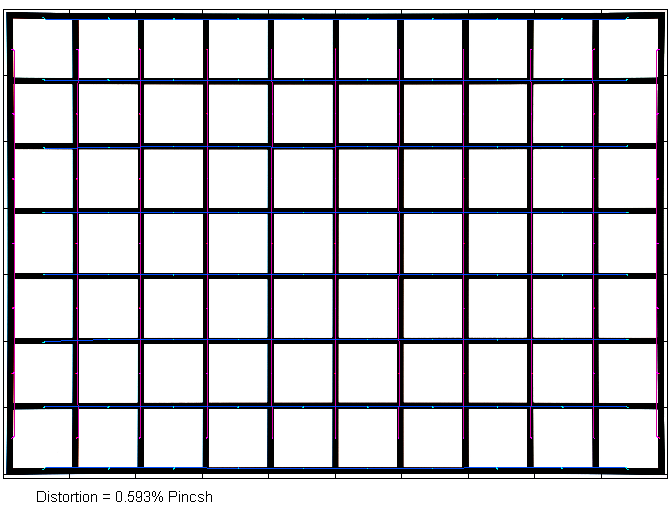
Vignetting
Large aperture lenses tend to produce very high vignetting at max aperture, and in RAW images, the vignetting is indeed very noticeable, with a peak of ~2.3 EV (f-stops) at f/1.7 – that’s beyond our usual scale for APS-C lenses. Stopping down to f/2.2 reduces this by 2/3 EV (f-stops), and the issue is mostly resolved from f/4.
Auto-correction does, however, reduce the vignetting down to a more manageable ~1.1 EV at f/1.7.
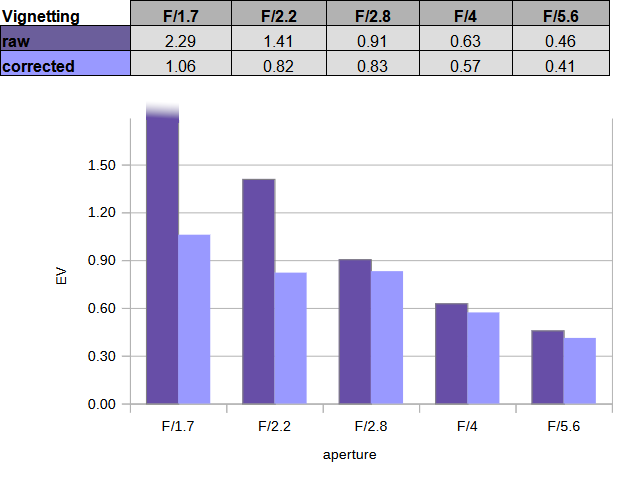
MTF (resolution) at 26 megapixels
So far, the Vitrox “Air” lenses provided great image quality for the money, and that’s no different with the AF 35mm f/1.7 XF. The performance is very good across most of the image field at f/1.7 already. Stopping down to f/2.2 lifts the center quality to excellent levels, and the outer image field is slightly improved, with the extreme corners now also reaching very good quality. The peak quality is reached between f/2.8 and f/4. Diffraction has a higher impact from f/8, but the lens is still very sharp here.
The field curvature is negligible. The centering quality of the tested sample was good.
Please note that the MTF results are not directly comparable across the different systems!
Below is a simplified summary of the formal findings. The chart shows line widths per picture height (LW/PH) which can be taken as a measure of sharpness. If you want to know more about the MTF50 figures, you may check out the corresponding Imatest Explanations.
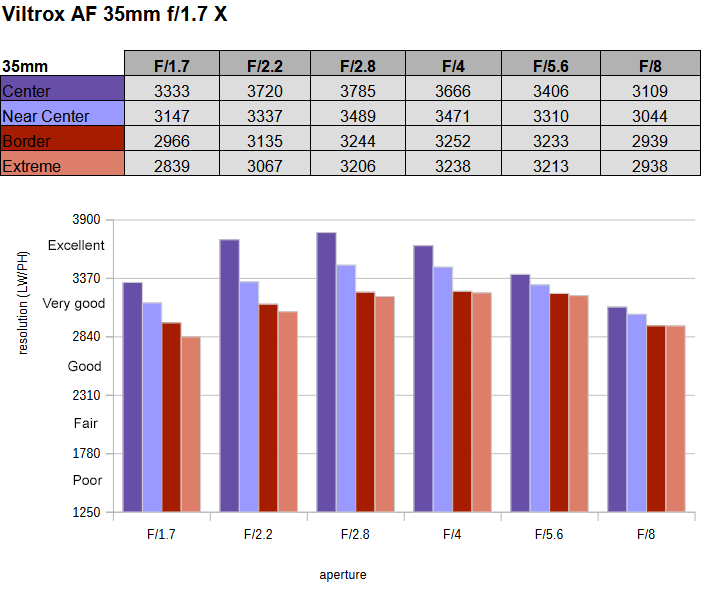
Chromatic Aberrations (CAs)
Lateral CAs have an average width of around 0.4px at the image borders and max aperture. This is negligible, even without auto-correction.

Bokeh
A f/1.7 lens isn’t super fast in the APS-C scope – equivalent to a ~52mm f/2.4 on full format – but if you shoot images at closer focus distances, you can still achieve a shallow depth-of-field. Thus, let’s check out the bokeh.
Out-of-focus highlights are generally nicely rendered with a smooth inner disc zone. However, at f/1.7, there is some noticeable outlining effect. Stopping down to f/2.2 removes these distinctive edges. The circular shape of the discs is maintained at f/2.8 and minor traces of the more edgy aperture shape are creeping in at f/4.
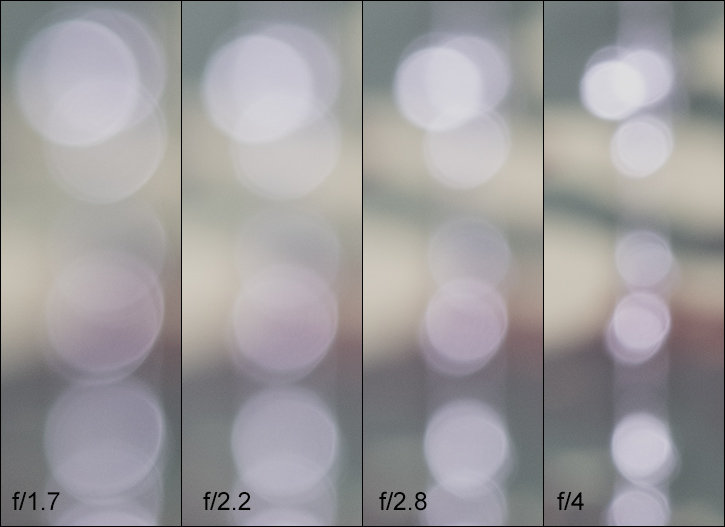
When looking at the highlight rendering across the whole image field, we can observe the already mentioned outlining of the discs at f/1.7. The circular disc shape is only present near the image center. Beyond the discs, develop an increasing cat-eye effect towards the image corners, although it’s not overly pronounced.
As usual, stopping down broadens the zone with truly circular discs and they are mostly restored across the image field from f/4 onward.
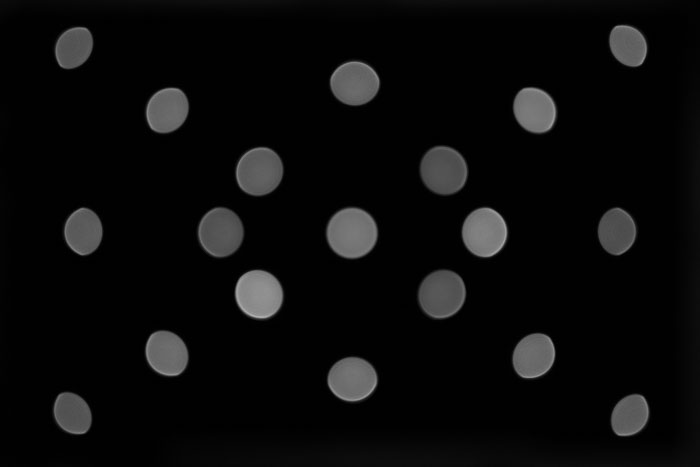
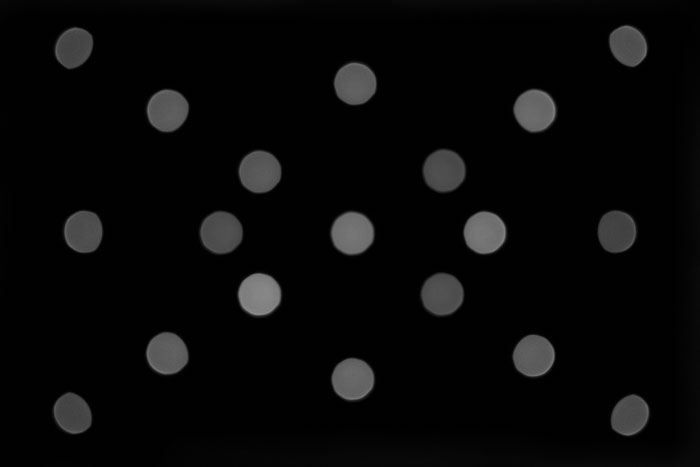
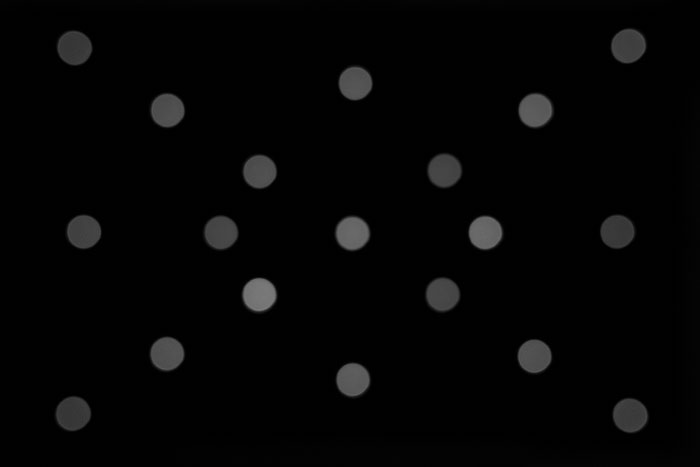

The rendering quality in the focus transition zone is smooth in the image background – shown the left below. The foreground blur (to the right) shows more distinctive edge shadows.
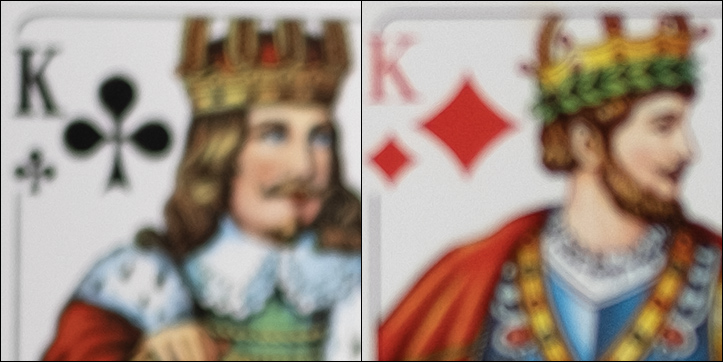
Bokeh Fringing / LoCA
LoCAs, or bokeh fringing, is a color fringing effect on the Z-axis. It shows up with a purplish tint in front of the focus point and a greenish tint behind – and it’s nearly impossible to fully correct in post.
The Viltrox lens does show some color fringing at f/1.7, as you can see below. Traces remain at f/2.8, and the issue is basically gone from f/4.
There’s no relevant focus shift when shopping down.
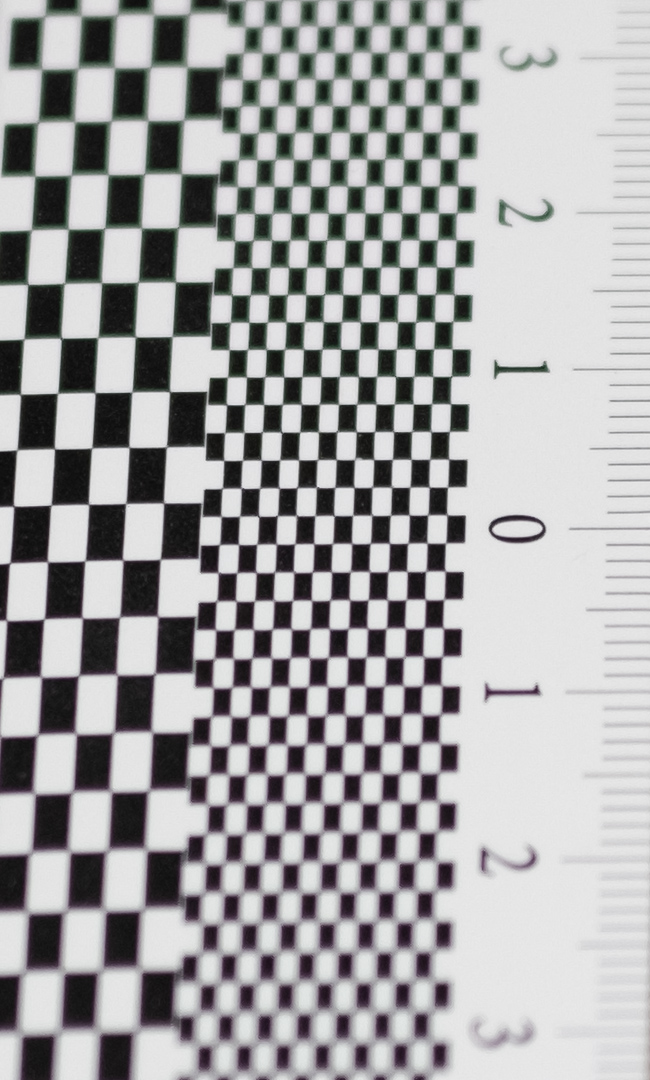
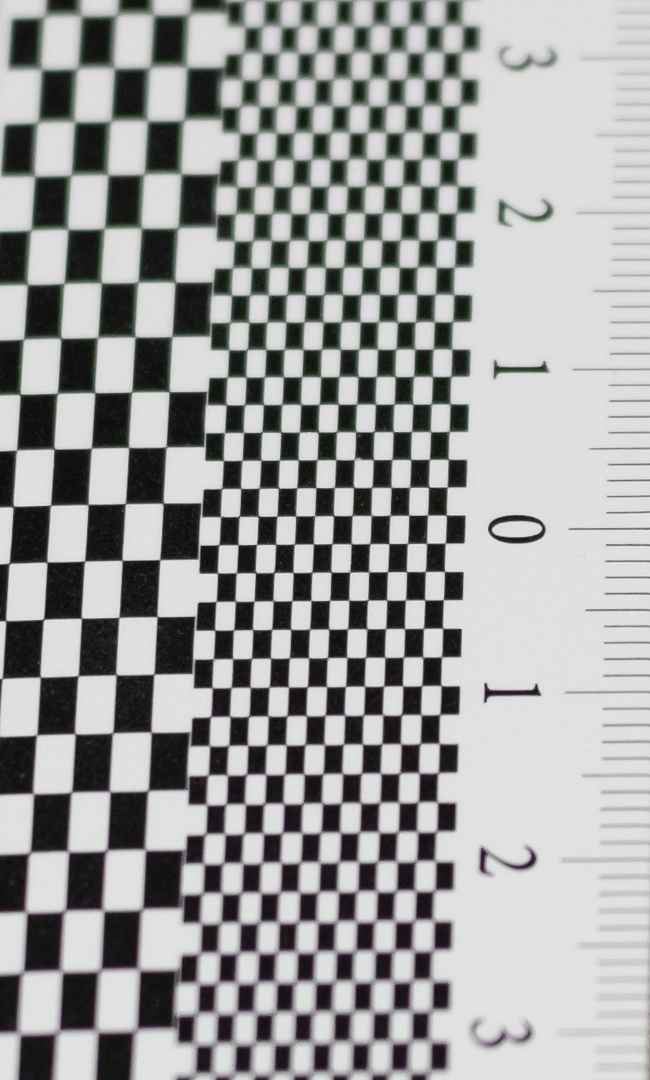
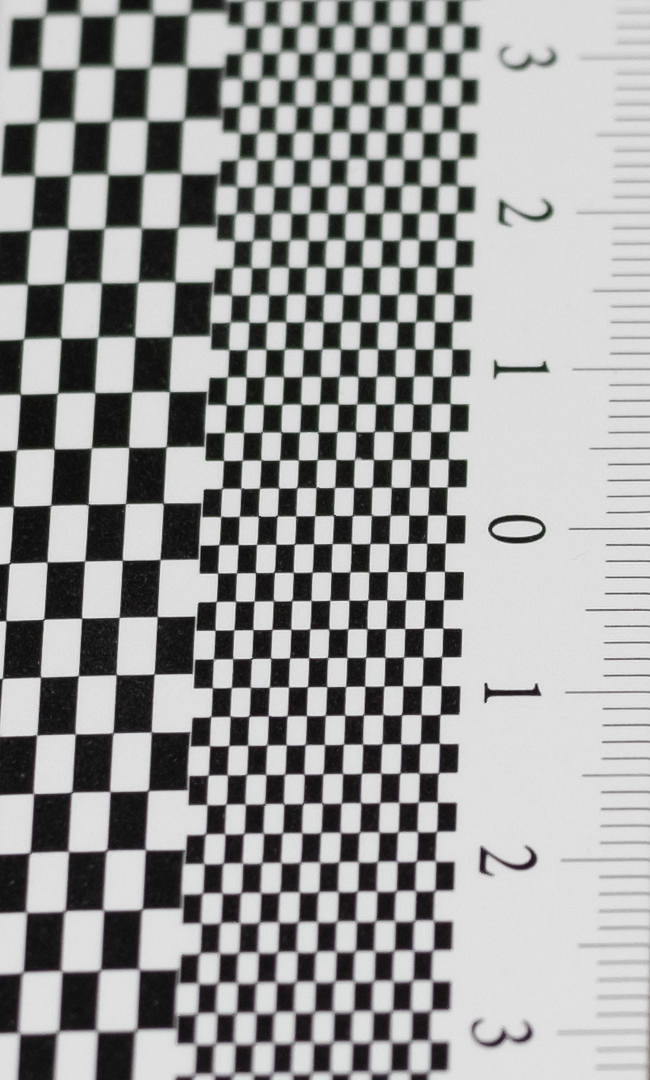
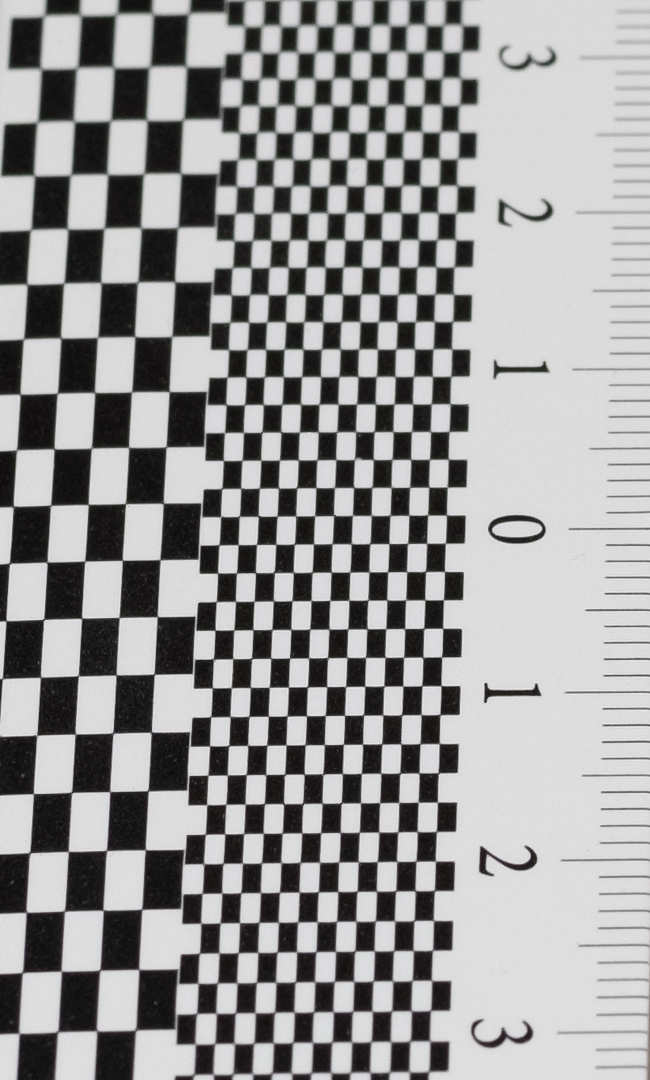
Competition
As hinted in the introduction, the Viltrox AF 35mm f/1.7 XF is not without competition. Fujifilm has actually two 35mm f/2 lenses in their lineup. The XF 35mm f/2 R WR and the mechanically stripped-down XC 35mm f/2. In terms of (perceived) mechanical quality, the Viltrox sits in between the two. The XC 35mm f/2 doesn’t even have a metal mount, for instance. The Fujinons are a bit shorter – but then they are also a bit slower. Optically, the Fujinons are pretty good, but the Viltrox lens does have a slight edge. TTArtisans just launched a new AF 35mm f/1.8 II. We have yet to test this one. However, at least their own MTF charts do not suggest a superior offering.
Sample Images
The Viltrox AF 35mm f/1.7 XF may be inexpensive yet it still delivers a surprisingly high level of performance. This is especially true for image sharpness. The lens is already very usable at maximum aperture and it's excellent around the f/2.8 to f/4 mark. Image distortions as well as lateral CAs are low. Vignetting does require some auto-correction a f/1.7. The bokeh is generally smooth but stop down a tiny bit for the best results. Axial CAs can be visible at large aperture settings but that's to be expected at this price point.
The build quality is pretty good. Of course, it's not a professional grade lens - it does, for instance, not feature weather sealing - but the plastic quality is decent and it's tightly assembled. We also liked the inner focusing, and the AF is fast enough.
Overall, it's a steal for the money. So far this applied to all Viltrox "Air" lens, and it's nice to see that they do care for quality even in such budget offerings.
PS: If you are interested in purchasing this lens - you can use this discount LINK to get 15% off in the Viltrox store from December 18th to 30th, 2024.
-
Optical Quality
-
Build Quality
-
Price / Performance


